Mena pushes for nuclear future
2 August 2023

The Middle East and North Africa (Mena) region is set to register a rise of at least 30 per cent in power generation capacity by 2030 due to population growth and industrial expansion.
The rapid increase requires a strategy to advance energy security while reducing carbon emissions and fossil-fuel dependence, creating strong interest in nuclear power and renewable energy.
Iran has a 1GW nuclear plant in Bushehr and construction is under way for a second 300MW reactor in Khuzestan.
In the UAE, three of the four 1.4GW reactors at the GCC region’s first multi-unit nuclear power plant in Barakah, Abu Dhabi, are now connected to the electricity grid.
Egypt, in partnership with Russia’s Rosatom, is building its first nuclear power plant in El-Debaa.
Riyadh, meanwhile, tendered the contract to build its first large-scale power plant in Duwaiheen last year.
Beyond the GCC, Jordan has announced the production of 20 kilograms of yellowcake from 160 tonnes of uranium ore at a newly operational processing facility, while Morocco has completed a study supporting a plan to go nuclear.
Alternative base load
Apart from Saudi Arabia, these countries have significant renewable capacity as of 2023. All aim for renewables to account for up to half of installed capacity by the end of the decade.
Nuclear is seen as an alternative base load to thermal capacity to counter the intermittency of renewables in the absence of viable storage solutions. This has helped build the case for adding nuclear to the energy mix – although, in the UAE, the Barakah plant predated the renewable energy programme.
The decarbonisation potential of nuclear may be overstated, however, says a leading regional expert on utility projects.
“We should use all available clean-carbon solutions to decarbonise all industrial and human consumption and endeavour,” says Paddy Padmanathan, former CEO of Saudi utility Acwa Power. “Clearly we need to decarbonise as soon as possible.”
The rate at which the residual carbon budget is being consumed implies that even zero emissions by 2050 will not be sufficient, according to the executive. This begs the question: Which technologies will deliver solutions at scale to quickly achieve decarbonisation.
Nuclear power plants, which – with the exception of Abu Dhabi’s Barakah – have struggled to be delivered on time and within budget, may not be a viable solution, says Padmanathan, who now sits on the board of the UK energy startup Xlinks and green hydrogen firm Zhero.
He says nuclear power plants outside China have taken twice as long to build than planned and have typically cost more than twice their budget. Such capital expenditure and long construction times mean nuclear may only make sense if you have lots of spare cash, he adds.
Hence it is unwise to factor in nuclear to plans to decarbonise power generation by 2050, Padmanathan argues. “We already have much – if not all – the technologies to get the job done,” he notes, referring to renewable energy and battery storage solutions, among others.
He continues: “One cannot bank on such a rare outlier as Barakah, which got completed with only a marginal increase in cost and time, and rely on nuclear to deliver any meaningful level of flexible base load.”
Saudi programme
Budget availability and the urgency of decarbonisation aside, other factors complicate nuclear projects in the region, particularly in Saudi Arabia.
The kingdom’s nuclear energy programme dates back to 2010 with the creation of King Abdullah City for Atomic & Renewable Energy (KA-Care). In 2021, KA-Care invited consultancy bids for its first large-scale nuclear power project in Duwaiheen, close to the Qatar border. It awarded the financial, legal and technical advisory services contracts last year.
In October 2022, Riyadh issued the request for proposals for the main contract to Russian, South Korean, Chinese and French firms.
Earlier this year, it formed the Saudi Nuclear Energy Holding Company, which plans to develop nuclear power plants as early as 2027 to produce electricity and to desalinate seawater, as well as for thermal energy applications.
Most recently, the state offtaker Saudi Power Procurement Company floated a tender for advisers to help prepare and review project agreements related to the procurement of electricity from Saudi’s first nuclear power plant, raising further speculation about the nuclear project.
The Saudi programme, particularly the kingdom’s plans to mine uranium as part of its economic and industrial strategy, is a thorn in Washington’s side. It is understood to have been a key theme in discussions when US President Joe Biden visited Riyadh last year.
Washington is wary of the nuclear power plant contract being awarded to Chinese or Russian contractors, not only because this could drive Riyadh closer to geopolitical rivals of the US, but also because it weakens US demands for Riyadh to abandon its nuclear fuel cycle ambitions before signing any bilateral nuclear cooperation agreement (NCA), otherwise known in Washington as a 123 agreement.
Uranium has to be enriched to up to 5 per cent for use in nuclear power plants and to 90 per cent to become weapons-grade. According to an Energy Intelligence report, the stalemate between Washington and Riyadh centres around US demands for Saudi Arabia to commit to the NCA and not pursue a domestic uranium enrichment or reprocessing programme.
The US also wants the kingdom to sign and ratify the International Atomic Energy Agency’s (IAEA) Additional Protocol, allowing nuclear inspectors fuller access to Saudi Arabia’s nuclear programme.
The report alludes to the US supporting South Korean contractor Kepco’s bid to develop the nuclear plant because it provides Washington with a final lever for pressuring Riyadh to accept its conditions for the 123 agreement and IAEA protocol.
Done deal
Biden’s visit did not produce material results, although unconfirmed reports say he may have given his blessing to the project, while others argue Riyadh did not need it.
“I think, in the end, this is a done deal, meaning that Saudi Arabia will pursue a nuclear energy programme,” says Karen Young, a senior research scholar at the Centre on Global Energy Policy at Columbia University in the US.
“They will pursue domestic uranium mining and likely enrichment, and we will see a more global ramp-up of nuclear energy use – and also, over time, possibly areas of proliferation in security uses not just in the Mena region, but across a wide geography.”
The US can either take solace from the fact that it takes time to develop a nuclear project, or it can – if it is not too late – revisit its relationship with Saudi Arabia, especially in the wake of a rapprochement between Tehran and Riyadh under a deal brokered by China.
“Moving into design and procurement phases … whether with Russian, Chinese or South Korean [firms] … heightens already sensitive notions of strategic competition in the Gulf, as the US understands it,” notes Young.
In hindsight, it appears the US government has under-appreciated the seriousness of the Saudi plan or the importance of localised industry and mining as a domestic economic and security interest.
“Saudi Arabia sees an opportunity to play the US against its other options, so this is a unique moment of bargaining in which the nuclear file can be traded against broader foreign policy priorities for the Saudi leadership,” Young says.
Russian conundrum
The Barakah nuclear process, which entailed Abu Dhabi signing a 123 agreement with Washington, is seen as a gold standard. Emirates Nuclear Energy Company (Enec) signed supply contracts with France’s Areva and Russia’s Tenex for the supply of uranium concentrates and for the provision of conversion and enrichment services.
It then contracted Uranium One, part of Russia’s Rosatom, and UK-headquartered Rio Tinto for the supply of natural uranium for the plant. US-based ConverDyn provided conversion services, while British firm Urenco provided enrichment services.
The enriched uranium was supplied to Kepco Nuclear Fuels to manufacture the fuel assemblies for use at the Barakah nuclear power plant.
Fuel supply, processing, removal and storage are now complicated by Russia’s conflict and its global reputation, notes Young. The reference to Russia is important, given that Iran has provided drones to the country for use in its war with Ukraine, in exchange for the sale of advanced military equipment and cyber warfare. This is seen as a direct threat to Opec ally Riyadh.
The Tehran-Riyadh rapprochement only makes sense from a viewpoint where a dead Iran nuclear deal could expedite the Islamic Republic’s plan to build a bomb, potentially leading to a nuclear arms raise in the region, which everyone – particularly the two countries’ biggest client, China – would rather avoid.
Despite these complexities, the regional and global push to build nuclear capacity following the invasion of Ukraine and the threat to global gas supplies does not appear to be slowing.
The UAE, for instance, has partnered with the US to mobilise $100bn to support clean energy projects at home and abroad, and has pledged $30bn for energy cooperation with South Korea. Both these commitments involve significant investments in renewable and civilian nuclear energy projects.
This suggests that nuclear as a clean energy option is here to stay, despite mounting costs and geopolitical risks
Unfortunately, however, in a region marked by perennial instability, there are few incentives for the involved countries to be more transparent about their programmes.
While the evolving rapprochement between countries that have previously considered each other existential threats might not eliminate the spectre of a nuclear arms race, it can defuse tensions in the interim while helping push decarbonisation agendas.
Exclusive from Meed
-
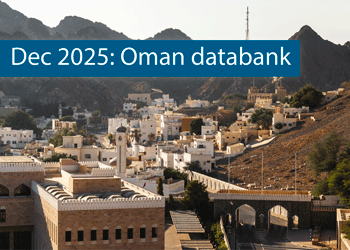 Oman’s growth forecast points upwards
Oman’s growth forecast points upwards24 December 2025
-
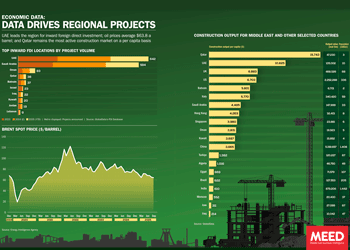 December 2025: Data drives regional projects
December 2025: Data drives regional projects23 December 2025
-
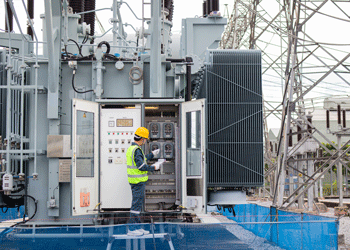 Local firm bids lowest for Kuwait substation deal
Local firm bids lowest for Kuwait substation deal22 December 2025
-
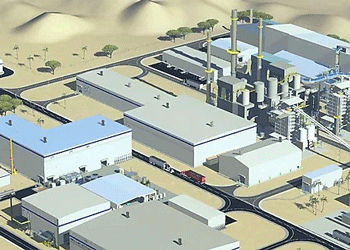 Saudi-Dutch JV awards ‘supercentre’ metals reclamation project
Saudi-Dutch JV awards ‘supercentre’ metals reclamation project22 December 2025
-
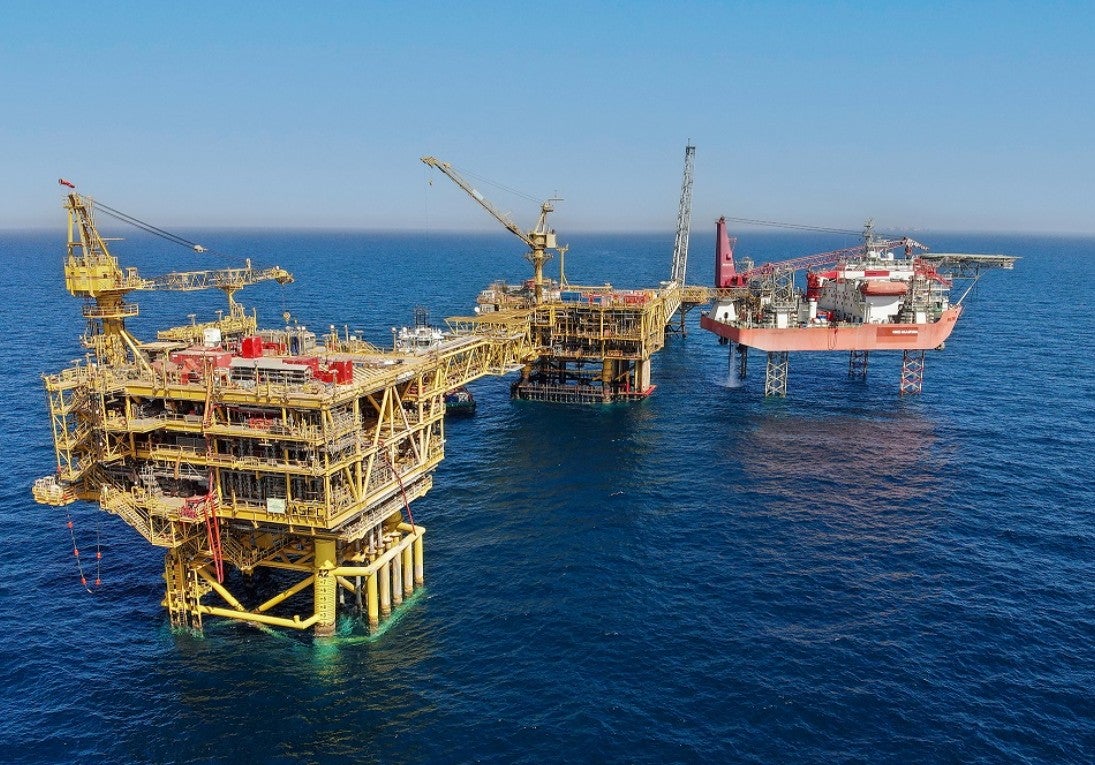 QatarEnergy LNG awards $4bn gas project package
QatarEnergy LNG awards $4bn gas project package22 December 2025
All of this is only 1% of what MEED.com has to offer
Subscribe now and unlock all the 153,671 articles on MEED.com
- All the latest news, data, and market intelligence across MENA at your fingerprints
- First-hand updates and inside information on projects, clients and competitors that matter to you
- 20 years' archive of information, data, and news for you to access at your convenience
- Strategize to succeed and minimise risks with timely analysis of current and future market trends

Related Articles
-
 Oman’s growth forecast points upwards
Oman’s growth forecast points upwards24 December 2025

MEED’s January 2026 report on Oman includes:
> COMMENT: Oman steadies growth with strategic restraint
> GVT & ECONOMY: Oman pursues diversification amid regional concerns
> BANKING: Oman banks feel impact of stronger economy
> OIL & GAS: LNG goals galvanise Oman’s oil and gas sector
> POWER & WATER: Oman prepares for a wave of IPP awards
> CONSTRUCTION: Momentum builds in construction sectorTo see previous issues of MEED Business Review, please click herehttps://image.digitalinsightresearch.in/uploads/NewsArticle/15306449/main.gif -
 December 2025: Data drives regional projects
December 2025: Data drives regional projects23 December 2025
Click here to download the PDF
Includes: Top inward FDI locations by project volume | Brent spot price | Construction output
MEED’s January 2026 report on Oman includes:
> COMMENT: Oman steadies growth with strategic restraint
> ECONOMY: Oman pursues diversification amid regional concerns
> BANKING: Oman banks feel impact of stronger economy
> OIL & GAS: LNG goals galvanise Oman’s oil and gas sector
> POWER & WATER: Oman prepares for a wave of IPP awards
> CONSTRUCTION: Momentum builds in construction sectorTo see previous issues of MEED Business Review, please click herehttps://image.digitalinsightresearch.in/uploads/NewsArticle/15306140/main.gif -
 Local firm bids lowest for Kuwait substation deal
Local firm bids lowest for Kuwait substation deal22 December 2025
The local Al-Ahleia Switchgear Company has submitted the lowest price of KD33.9m ($110.3m) for a contract to build a 400/132/11 kV substation at the South Surra township for Kuwait’s Public Authority for Housing Welfare (PAHW).
The bid was marginally lower than the two other offers of KD35.1m and KD35.5m submitted respectively by Saudi Arabia’s National Contracting Company (NCC) and India’s Larsen & Toubro.
PAHW is expected to take about three months to evaluate the prices before selecting the successful contractor.
The project is one of several transmission and distribution projects either out to bid or recently awarded by Kuwait’s main affordable housing client.
This year alone, it has awarded two contracts worth more than $100m for cable works at its 1Z, 2Z, 3Z and 4Z 400kV substations at Al-Istiqlal City, and two deals totalling just under $280m for the construction of seven 132/11kV substations in the same township.
Most recently, it has tendered two contracts to build seven 132/11kV main substations at its affordable housing project, west of Kuwait City. The bid deadline for the two deals covering the MS-01 through to MS-08 substations is 8 January.
https://image.digitalinsightresearch.in/uploads/NewsArticle/15305745/main.gif -
 Saudi-Dutch JV awards ‘supercentre’ metals reclamation project
Saudi-Dutch JV awards ‘supercentre’ metals reclamation project22 December 2025
The local Advanced Circular Materials Company (ACMC), a joint venture of the Netherlands-based Shell & AMG Recycling BV (SARBV) and local firm United Company for Industry (UCI), has awarded the engineering, procurement and construction (EPC) contract for the first phase of its $500m-plus metals reclamation complex in Jubail.
The contract, estimated to be worth in excess of $200m, was won by China TianChen Engineering Corporation (TCC), a subsidiary of China National Chemical Engineering Company (CNCEC), following the issue of the tender in July 2024.
Under the terms of the deal, TCC will process gasification ash generated at Saudi Aramco’s Jizan refining complex on the Red Sea coast to produce battery-grade vanadium oxide and vanadium electrolyte for vanadium redox flow batteries. AMG will provide the licensed technology required for the production process.
The works are the first of four planned phases at the catalyst and gasification ash recycling ‘Supercentre’, which is located at the PlasChem Park in Jubail Industrial City 2 alongside the Sadara integrated refining and petrochemical complex.
Phase 2 will expand the facility to process spent catalysts from heavy oil upgrading facilities to produce ferrovanadium for the steel industry and/or additional battery-grade vanadium oxide.
Phase 3 involves installing a manufacturing facility for residue-upgrading catalysts.
In the fourth phase, a vanadium electrolyte production plant will be developed.
The developers expect a total reduction of 3.6 million metric tonnes of carbon dioxide emissions a year when the four phases of the project are commissioned.
SARBV first announced its intention to build a metal reclamation and catalyst manufacturing facility in Saudi Arabia in November 2019. The kingdom’s Ministry of Investment, then known as the Saudi Arabian General Investment Authority (Sagia), supported the project.
In July 2022, SARBV and UCI signed the agreement to formalise their joint venture and build the proposed facility.
The project has received support from Saudi Aramco’s Namaat industrial investment programme. Aramco, at the time, also signed an agreement with the joint venture to offtake vanadium-bearing gasification ash from its Jizan refining complex.
Photo credit: SARBV
https://image.digitalinsightresearch.in/uploads/NewsArticle/15305326/main.gif -
 QatarEnergy LNG awards $4bn gas project package
QatarEnergy LNG awards $4bn gas project package22 December 2025
QatarEnergy LNG, a subsidiary of state-owned QatarEnergy, has awarded the main engineering, procurement, construction and installation (EPCI) contract for a major package for the second phase of its North Field Production Sustainability (NFPS) project.A consortium comprising the Italian contractor Saipem and state-owned China Offshore Oil Engineering Company (COOEC) has secured the EPCI contract for the COMP5 package. The contract value is $4bn, with Saipem declaring its share to be worth $3.1bn.
Milan-headquartered Saipem said the contract will run for about five years. The scope of work comprises engineering, procurement, fabrication and installation of two compression complexes, each including a compression platform, a living quarters platform, a flare platform supporting the gas combustion system, and the related interconnecting bridges. Each complex will have a total weight of about 68,000 tonnes.
Offshore installation operations will be carried out by Saipem’s De He construction vessel in 2029 and 2030.
MEED previously reported that the following contractors submitted bids for the NFPS phase two COMP5 package:
- Larsen & Toubro Energy Hydrocarbon (India)
- McDermott (US)
- Saipem/China Offshore Oil Engineering Company (Italy/China)
QatarEnergy LNG, formerly Qatargas, is said to have issued the tender for the NFPS phase two COMP5 package in the first quarter of the year.
Contractors submitted technical bids for the COMP5 package in late June, while commercial bids were submitted by 8 October, as per sources.
Based upon initial evaluation of bids by QatarEnergy LNG, L&TEH has emerged as the lowest bidder for the COMP5 package, followed by McDermott, with the consortium of Saipem and COOEC in third place, MEED reported in late October.
In the weeks following that, the project operator is said to have engaged all bidders for a final round of negotiations, during which the consortium of Saipem and COOEC is believed to have “clinched the deal”, according to sources.
The detailed scope of work on the COMP5 package covers the EPCI work on the following:
- Two gas compression platforms, each weighing 30,000-35,000 tonnes, plus jacket
- Two living quarters platforms, plus jacket
- Two gas flare platforms, plus jacket
- Brownfield modification work at two complexes
NFPS scheme
QatarEnergy’s North Field liquefied natural gas (LNG) expansion programme requires the state enterprise to pump large volumes of gas from the North Field offshore reserve to feed the three phases of the estimated $40bn-plus programme.
QatarEnergy has already invested billions of dollars in engineering, procurement and construction works on the two phases of the NFPS project, which aims to maintain steady gas feedstock for the North Field LNG expansion phases.
The second NFPS phase will mainly involve building gas compression facilities to sustain and gradually increase gas production from Qatar’s offshore North Field gas reserve over the long term.
Saipem has been the most successful contractor on the second NFPS phase, securing work worth a total of $8.5bn.
QatarEnergy LNG awarded Saipem a $4.5bn order in October 2022 to build and install gas compression facilities. The main scope of work on the package, which is known as EPCI 2, covers two large gas compression complexes that will comprise decks, jackets, topsides, interconnecting bridges, flare platforms, living quarters and interface modules.
The gas compression complexes – CP65 and CP75 – will weigh 62,000 tonnes and 63,000 tonnes, respectively, and will be the largest fixed steel jacket compression platforms ever built.
Following that, Saipem won combined packages COMP3A and COMP3B of the NFPS project’s second phase in September last year.
The scope of work on the combined packages encompasses the EPCI of a total of six platforms, approximately 100 kilometres (km) of corrosion resistance alloy rigid subsea pipelines of 28-inches and 24-inches diameter, 100km of subsea composite cables, 150km of fibre optic cables and several other subsea units.
Separately, QatarEnergy LNG awarded McDermott the contract for the NFPS second phase package known as EPCI 1, or COMP1, in July 2023. The scope of work on the estimated $1bn-plus contract is to install a subsea gas pipeline network at the North Field gas development.
In March this year, India’s Larsen & Toubro Energy Hydrocarbon (LTEH) won the main contract for the combined 4A and 4B package, which is the fourth package of the second phase of the NFPS project and is estimated to be valued at $4bn-$5bn.
The main scope of work on the package is the EPCI of two large gas compression systems that will be known as CP8S and CP4N, each weighing 25,000-35,000 tonnes. The contract scope also includes compression platforms, flare gas platforms and other associated structures.
LTHE sub-contracted detailed engineering and design works on the combined 4A and 4B package to French contractor Technip Energies.
NFPS first phase
Saipem is also executing the EPCI works on the entire first phase of the NFPS project, which consists of two main packages.
Through the first phase of the NFPS scheme, QatarEnergy LNG aims to increase the early gas field production capacity of the North Field offshore development to 110 million tonnes a year.
QatarEnergy LNG awarded Saipem the contract for the EPCI package in February 2021. The package is the larger of the two NFPS phase one packages and has a value of $1.7bn.
Saipem’s scope of work on the EPCI package encompasses building several offshore facilities for extracting and transporting natural gas, including platforms, supporting and connecting structures, subsea cables and anti-corrosion internally clad pipelines.
The scope of work also includes decommissioning a pipeline and other significant modifications to existing offshore facilities.
In addition, in April 2021, QatarEnergy LNG awarded Saipem two options for additional work within the EPCI package, worth about $350m.
QatarEnergy LNG awarded Saipem the second package of the NFPS phase one project, estimated to be worth $1bn, in March 2021.
Saipem’s scope of work on the package, which is known as EPCL, mainly covers installing three offshore export trunklines running almost 300km from their respective offshore platforms to the QatarEnergy LNG north and south plants located in Ras Laffan Industrial City.
Saipem performed the front-end engineering and design work on the main production package of the first phase of the NFPS as part of a $20m contract that it was awarded in January 2019. This provided a competitive advantage to the Italian contractor in its bid to win the package.
https://image.digitalinsightresearch.in/uploads/NewsArticle/15305330/main2239.jpg

